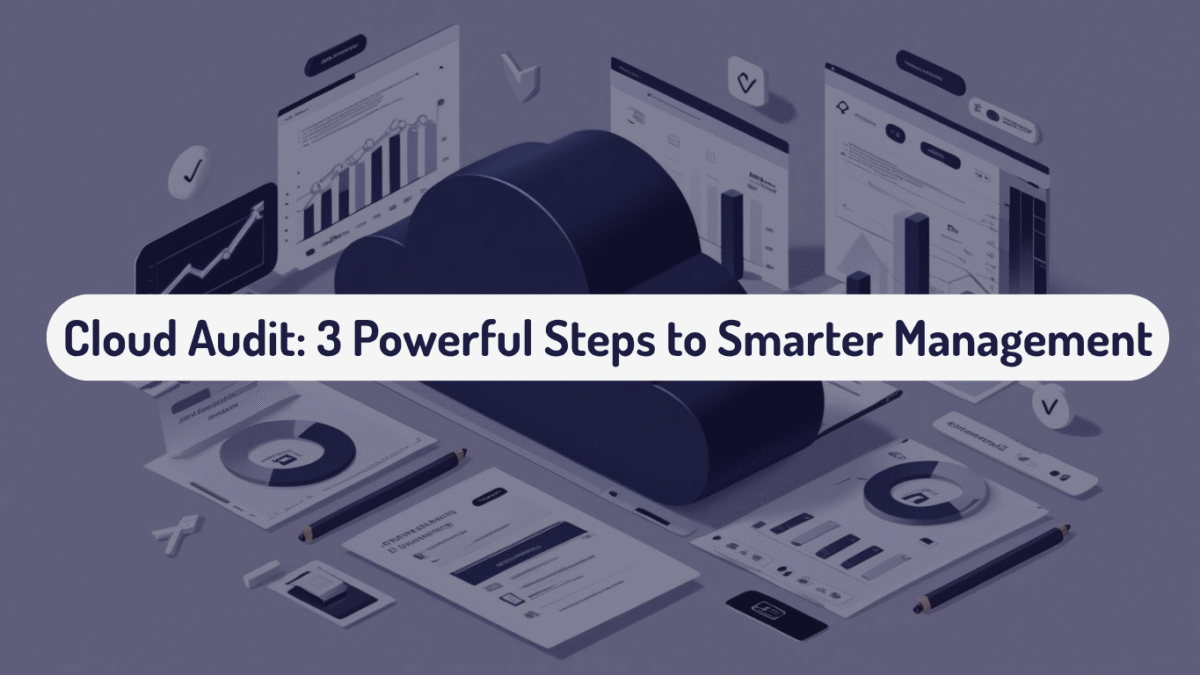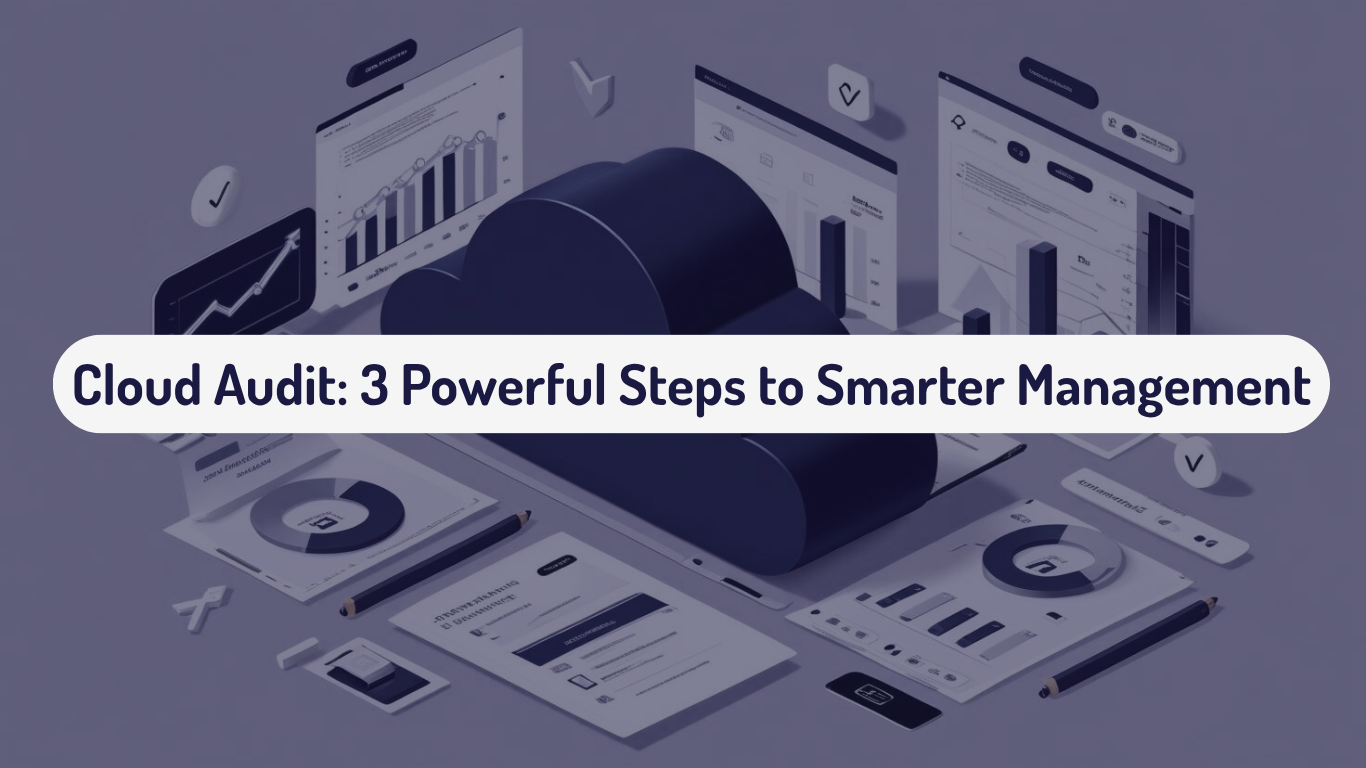In the world of digital transformation, cloud computing has revolutionized how organizations deploy infrastructure, scale applications, and deliver services. But as usage grows, so does complexity—and with it, the risk of waste, inefficiency, and overspending. This is where a cloud audit becomes an essential part of any cloud cost management strategy.

Whether you’re a startup, SME, or enterprise, conducting a cloud audit is your gateway to transparency, control, and long-term efficiency. At CloudRefit, we believe a properly executed cloud audit is the foundation of every smart cloud journey.
What Is a Cloud Audit?
A cloud audit is a comprehensive assessment of your cloud infrastructure, resources, usage patterns, cost structures, and security posture. The goal is to uncover inefficiencies, reduce waste, ensure compliance, and optimize performance.
This process goes beyond reviewing your monthly cloud bill—it’s a deep dive into the architecture, services, configurations, and spending behaviors that impact your bottom line.
Why Is a Cloud Audit Important?
A cloud audit enables organizations to:
- Identify unused or underutilized resources
- Expose hidden costs and inefficiencies
- Benchmark cloud performance and security
- Ensure compliance with regional laws and best practices
- Improve decision-making for future cloud investments
In the MENA region especially, where businesses must navigate local compliance and data residency regulations, a cloud audit isn’t just good practice—it’s essential.
Signs You Need a Cloud Audit
- Your monthly cloud bill keeps increasing unpredictably
- Teams provision cloud resources without any governance
- You suspect that your architecture is not optimized
- You rely on many third-party or proprietary cloud services
- You’re unsure about your compliance posture or cloud security setup
If any of these sound familiar, it’s time for a cloud audit.
The CloudRefit Audit Process
1. Discovery
We analyze your current infrastructure across AWS, Azure, GCP, and hybrid environments to map out:
- Compute resources (VMs, containers, serverless)
- Storage usage (S3, EBS, MinIO, etc.)
- Networking configurations and bandwidth usage
2. Tagging and Visibility Check
We review your tagging practices to ensure proper cost attribution and identify any blind spots in resource tracking.
3. Utilization and Performance Review
We examine the efficiency of workloads, including:
- Overprovisioned or idle instances
- Ineffective autoscaling
- Redundant services
4. Security and Compliance Review
We assess your architecture for vulnerabilities and data residency compliance, especially important for clients operating in Egypt, Saudi Arabia, and other regulated markets.
5. Cost Optimization Opportunities
We deliver a prioritized list of actions to:
- Reduce spend
- Improve system performance
- Prepare for growth
Cloud Audit Tools and Techniques
A successful audit combines manual expertise with powerful tools, such as:
- AWS Trusted Advisor & Cost Explorer
- Azure Advisor & Cost Management
- Google Cloud Recommender
- Kubecost (for Kubernetes workloads)
- Third-party tools like CloudHealth, Apptio, Spot.io
We also leverage open-source solutions and custom scripts for deeper insights into open-source stacks.
Cloud Audit and Open-Source Adoption
One of the unique advantages of working with CloudRefit is our expertise in open-source cloud replacements. During the audit, we often identify opportunities to migrate from:
- AWS RDS → PostgreSQL/MariaDB
- S3 → MinIO
- Elasticsearch → OpenSearch
- Proprietary CDNs → Varnish/NGINX
These shifts can reduce costs by up to 70% while retaining full control and compliance.
Real Case Study: What a Cloud Audit Uncovered
Client: FinTech Startup in Saudi Arabia
Problem: Cloud spend exceeded projections by 35% monthly. Compliance risks were flagged due to sensitive data being stored in non-regional zones.
CloudRefit Audit Findings:
- 24% of compute resources were idle or oversized
- 40 TB of cold storage on S3 could be moved to on-premise MinIO
- SQL databases could be moved to PostgreSQL with no performance loss
- No proper tagging, leading to billing confusion
Result
- 50% reduction in overall cloud costs within 45 days
- Full compliance with local data residency laws
- Improved resource visibility and accountability across teams
How Often Should You Conduct a Cloud Audit?
We recommend:
- Quarterly audits for startups and dynamic environments
- Monthly reports for high-growth SaaS companies
- Post-migration or post-expansion audits after major architecture changes
CloudRefit can help you set up continuous auditing and real-time cost monitoring to stay ahead.
Benefits of Partnering with CloudRefit for Your Cloud Audit
- ✅ Free first audit with no obligations
- ✅ Deep experience with MENA regulations and cloud environments
- ✅ Expertise in cloud-native and open-source platforms
- ✅ Actionable reporting with prioritized quick wins
- ✅ Transparent, vendor-neutral advice
Final Thoughts
A cloud audit is not just a diagnostic tool—it’s a strategic enabler. By uncovering inefficiencies, enhancing visibility, and aligning your infrastructure with your business goals, cloud audits pave the way for smarter, more cost-effective growth.
At CloudRefit, we make cloud audits fast, insightful, and impactful—helping startups and SMEs across the region build a resilient and optimized cloud foundation.
👉 Ready for your cloud audit? Start now at CloudRefit.com and take the first step toward cost efficiency and smarter cloud architecture.

